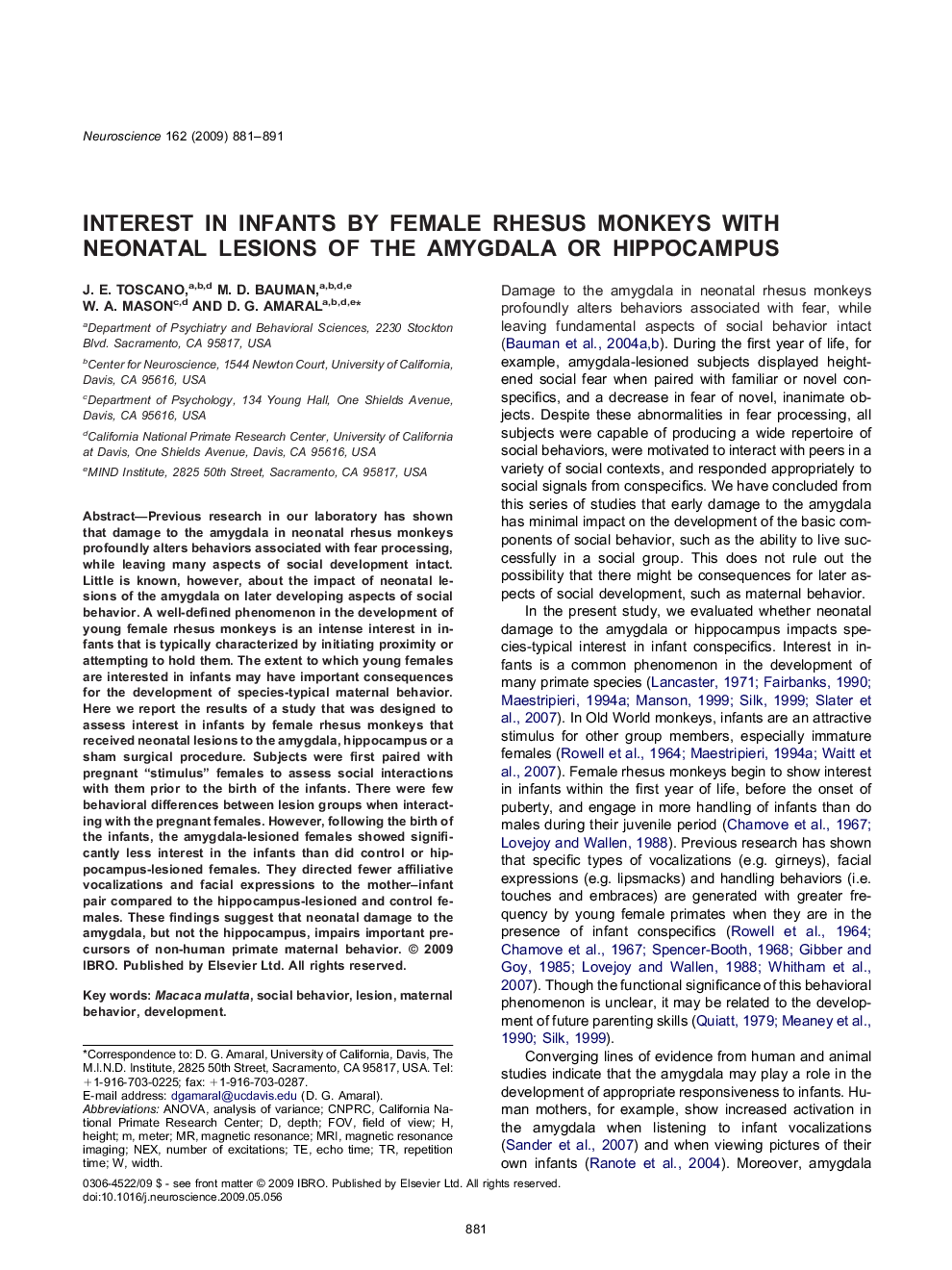| کد مقاله | کد نشریه | سال انتشار | مقاله انگلیسی | نسخه تمام متن |
|---|---|---|---|---|
| 4340211 | 1295788 | 2009 | 11 صفحه PDF | دانلود رایگان |
عنوان انگلیسی مقاله ISI
Interest in infants by female rhesus monkeys with neonatal lesions of the amygdala or hippocampus
دانلود مقاله + سفارش ترجمه
دانلود مقاله ISI انگلیسی
رایگان برای ایرانیان
کلمات کلیدی
METERNEXFOVHeight - ارتفاعMRI - امآرآی یا تصویرسازی تشدید مغناطیسیanalysis of variance - تحلیل واریانسANOVA - تحلیل واریانس Analysis of varianceMagnetic resonance - تشدید مغناطیسیMagnetic resonance imaging - تصویربرداری رزونانس مغناطیسیnumber of excitations - تعداد تحریکاتDevelopment - رشدsocial behavior - رفتار اجتماعیMaternal behavior - رفتار مادریLesion - زخمecho time - زمان اکوRepetition time - زمان تکرارWidth - عرضDepth - عمقMacaca mulatta - ماتاکت مککاField of view - میدان دید
موضوعات مرتبط
علوم زیستی و بیوفناوری
علم عصب شناسی
علوم اعصاب (عمومی)
پیش نمایش صفحه اول مقاله

چکیده انگلیسی
Previous research in our laboratory has shown that damage to the amygdala in neonatal rhesus monkeys profoundly alters behaviors associated with fear processing, while leaving many aspects of social development intact. Little is known, however, about the impact of neonatal lesions of the amygdala on later developing aspects of social behavior. A well-defined phenomenon in the development of young female rhesus monkeys is an intense interest in infants that is typically characterized by initiating proximity or attempting to hold them. The extent to which young females are interested in infants may have important consequences for the development of species-typical maternal behavior. Here we report the results of a study that was designed to assess interest in infants by female rhesus monkeys that received neonatal lesions to the amygdala, hippocampus or a sham surgical procedure. Subjects were first paired with pregnant “stimulus” females to assess social interactions with them prior to the birth of the infants. There were few behavioral differences between lesion groups when interacting with the pregnant females. However, following the birth of the infants, the amygdala-lesioned females showed significantly less interest in the infants than did control or hippocampus-lesioned females. They directed fewer affiliative vocalizations and facial expressions to the mother-infant pair compared to the hippocampus-lesioned and control females. These findings suggest that neonatal damage to the amygdala, but not the hippocampus, impairs important precursors of non-human primate maternal behavior.
ناشر
Database: Elsevier - ScienceDirect (ساینس دایرکت)
Journal: Neuroscience - Volume 162, Issue 4, 15 September 2009, Pages 881-891
Journal: Neuroscience - Volume 162, Issue 4, 15 September 2009, Pages 881-891
نویسندگان
J.E. Toscano, M.D. Bauman, W.A. Mason, D.G. Amaral,